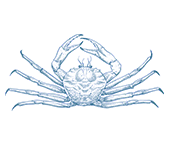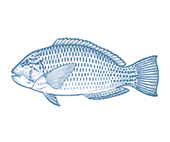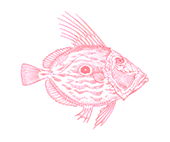




- Eat Less
Wild Caught
Region:
WA
- Saucer scallops are caught in bottom otter trawl fisheries operating in Shark Bay and WA. Multiple WA saucer scallop fisheries operate from Shark Bay to the south coast.
- Trawl fisheries targeting scallop in WA operate over sandy sea floor and are not permitted in sensitive habitats, such as seagrass beds and fish nursery areas.
- Area closures and marine parks provide additional protection for marine habitat and protected wildlife in some areas of the fishery.
- Stocks are monitored every year before the start of fishing to ensure numbers are adequate to support fishing effort.
- The majority of stocks have rebuilt to acceptable levels following depletions as a result of a marine heatwave in 2011.
- The fisheries catch small numbers of protected seahorses and pipefish; devices that enable turtles to escape are mandatory. A lack of independent observer coverage is of concern.
- WA Shark Bay Scallop Managed Fishery, Abrolhos Islands and Mid-West Trawl Managed Fishery, South West Trawl Managed Fishery, South Coast Trawl Fishery (1234t in 2021)
Ballot’s saucer scallop is a demersal filter feeding bivalve mollusc found in Western Australian, central/northern Queensland and New Caledonian waters, and are caught using bottom otter trawl fishing methods in QLD and WA.
Saucer scallops are caught in a number of different trawl fisheries in WA, with the largest fishery operating in Shark Bay. Trawling may have some effect on the seafloor, but the impact is considered low as trawling mainly takes place over sandy sea floor that is naturally resilient to disturbance. Vulnerable habitats such as seagrass and fish nurseries are closed in order to protect them from the effects of trawling.
WA trawlers catch some threatened species, including seahorses and seasnakes, but in very low numbers that are unlikely to have population level impacts on these species. While the majority of fishing effort occurs in waters that are too cold for sea turtles, devices that allow turtles to escape are mandatory on boats where interactions could occur. However, there is no independent observer coverage in the WA-managed fisheries, and reported protected species interactions require verifying.
Marine parks provide significant protection for both marine habitat and protected wildlife in the largest saucer scallop fishery in Shark Bay, and state and commonwealth marine parks offer a small but significant degree of protection for other areas close to saucer scallop fisheries.
Scallop populations are complex to assess, as scallop stocks are heavily influenced by factors such as water temperature. In WA, saucer scallop stocks were severely impacted by a three-year marine heatwave event that began in 2011, and the fishery has been in a rebuilding phase since then. Catches have now recovered to pre-heatwave levels in some areas.
In WA, populations of saucer scallop are closely monitored, for example, independent surveys to determine scallop numbers are made at the beginning of the fishing season and areas are then opened if populations are adequate to support fishing activity. The fishing season is timed so that saucer scallops spawn before the fishing season, which helps protect stocks.


